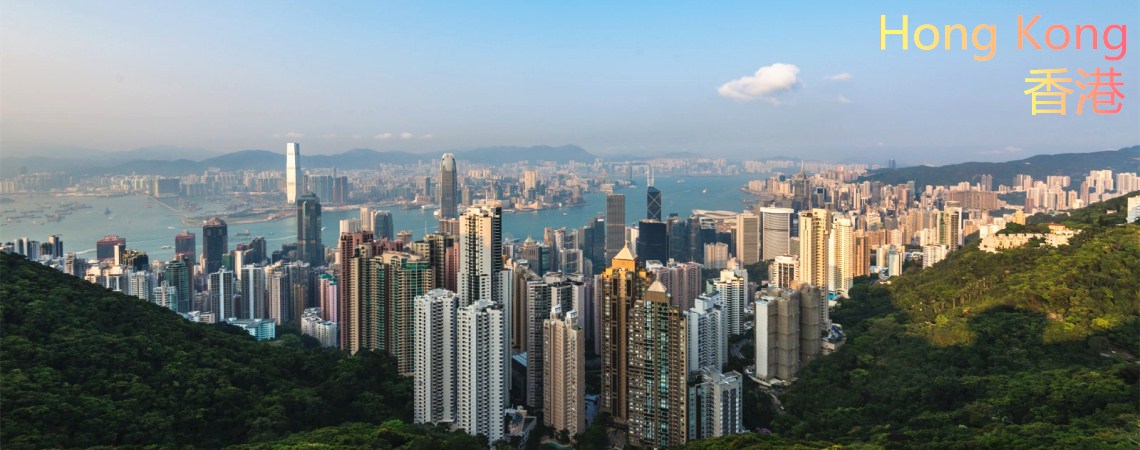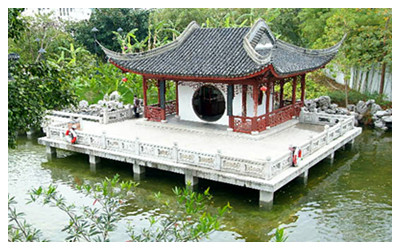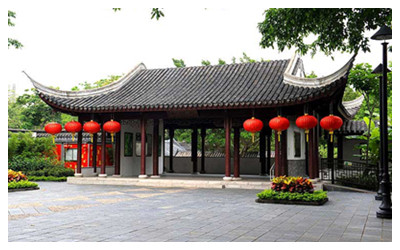Skype: neodalle-travel
Tel: +86 135 7447 2266
E-mail: sales@visitaroundchina.com

 Kowloon Walled City Park is once strategically located at the northeastern corner of the Kowloon peninsula and adjacent to what was later named Kowloon Bay, the site was used by imperial officials in the 15th century. It was first fortified in 1668 when a signal station was established there. Around 1810, a small fort was built at the head of the beach which then adjoined the site. The importance of the area to China's maritime defenses grew sharply following the British occupation of Hong Kong Island in 1841. Between 1843 and 1847 a walled garrison-city was constructed. Massive stone walls with six watchtowers and four gates enclosed the area, which covered 6.5 acres.
Kowloon Walled City Park is once strategically located at the northeastern corner of the Kowloon peninsula and adjacent to what was later named Kowloon Bay, the site was used by imperial officials in the 15th century. It was first fortified in 1668 when a signal station was established there. Around 1810, a small fort was built at the head of the beach which then adjoined the site. The importance of the area to China's maritime defenses grew sharply following the British occupation of Hong Kong Island in 1841. Between 1843 and 1847 a walled garrison-city was constructed. Massive stone walls with six watchtowers and four gates enclosed the area, which covered 6.5 acres.
The interior was dominated by the offices of the Commodore of the Dapeng Brigade, and the Kowloon Assistant Military Inspectorate, commonly known as 'Yamen'. In addition, there were more than ten complexes of military buildings including soldiers' quarters, and gunpowder and ordinance magazines. A few civilian houses could also be found in the city. When the city was completed 250 soldiers were stationed there. This number gradually increased until there were over 500 in 1898/99.
In 1898, the New Territories were leased to the British for a term of 99 years. At first, Qing officials still continued to keep their stations in the city. In 1899, however, British troops were sent to take it over, and the Qing officials and soldiers were expelled. The resultant vacuum of civil order from 1899 onward laid the seeds for the eventual deterioration of the area into a semi-lawless enclave festering criminals and trouble.
 During the Japanese occupation of 1941-45, the wall was torn down and the stones used to extend the nearby Kai Tak airfield. An idea of the large amount of quarried granite so gained is provided by the wall's dimensions. They were 5 meters (15 feet) wide, 4 meters (13 feet) high and 700 meters (2,200 feet) long, plus a supplementary wall which ran Great Wall-style from the northern rampart to the top of the hill which formerly overlooked the garrison.
During the Japanese occupation of 1941-45, the wall was torn down and the stones used to extend the nearby Kai Tak airfield. An idea of the large amount of quarried granite so gained is provided by the wall's dimensions. They were 5 meters (15 feet) wide, 4 meters (13 feet) high and 700 meters (2,200 feet) long, plus a supplementary wall which ran Great Wall-style from the northern rampart to the top of the hill which formerly overlooked the garrison.
After the war, high-rise tenements built without authority and completely lacking proper foundations mushroomed across almost the whole site and the Walled City, along with its dank alleyways, became a notorious nest of drug traders, criminal hide-outs, corruption, bribery, and even cheap, unlicensed dentists.
In 1987, with the agreement of the Chinese authorities, the decision was taken to clear the area and build a park on the site. This incorporated as many features as possible of the remaining original buildings and other aspects of the sight. Demolition was completed in April 1994, and despite decades of neglect and misuse, a rewarding number of relics were unearthed. Nearly all of these were integretated in the design or preserved as exhibits.
Other remnants included the foundation of the former wall, the foundations of the South and East Gates, and a flag-stone path next to the drainage ditch running along the foot of the inner wall. Other relics included three old cannons, stone lintels and couplets, and column bases.
The park covers 31,000 square meters (7.66 acres) and is divided into eight scenic zones each with individual characteristics but blending into the overall design. It was built at a cost of $76 million and is managed by the Leisure and Cultural Services Department.
 Ask Questions ?
Ask Questions ?